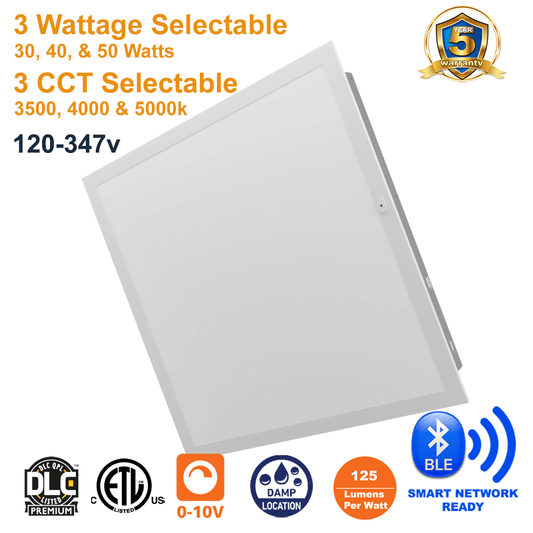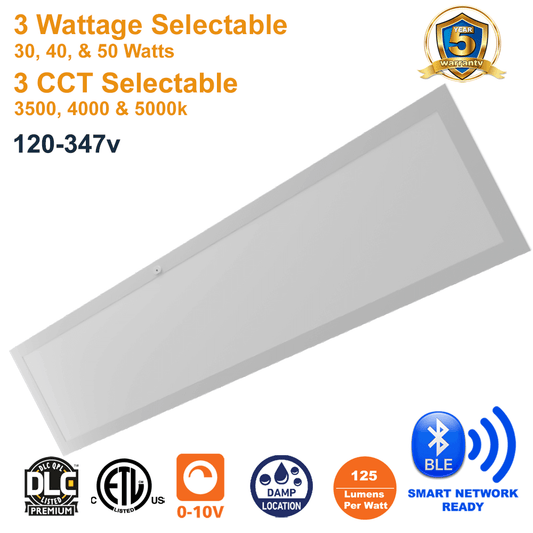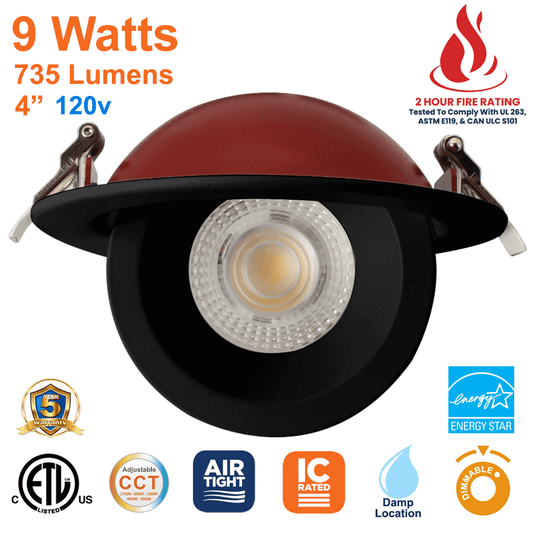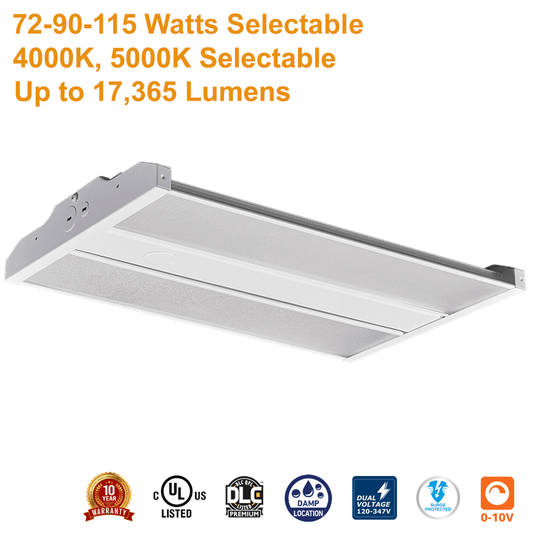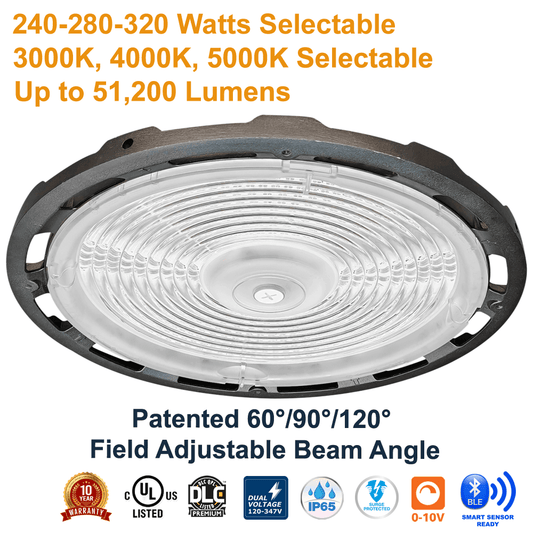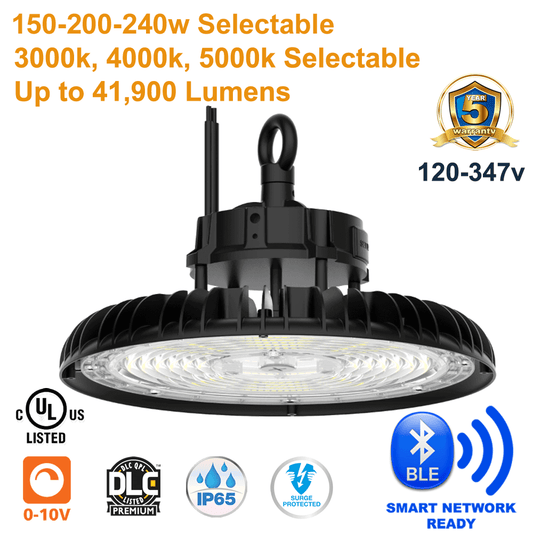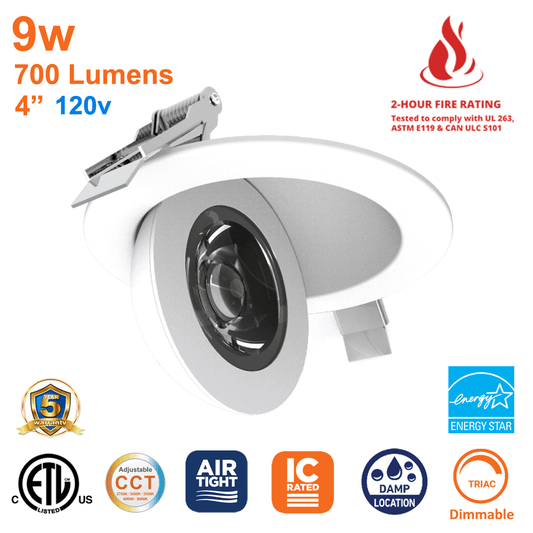Summary: In the evolving world of commercial lighting, Networked Lighting Controls (NLCs) are at the forefront, offering a plethora of non-energy benefits. From asset tracking and indoor positioning to integration with HVAC and other systems, NLCs are revolutionizing how businesses operate. This article delves into the multifaceted advantages of NLCs, highlighting their role in enhancing productivity, safety, and equipment longevity.
Table of Contents
- What are Networked Lighting Controls (NLCs)?
- Can NLCs Interface with Other Automated Systems?
- How do Networked Lighting Controls help with Asset Tracking?
- Can NLCs be used for Indoor Positioning?
- What diagnostic capabilities do Networked Lighting Controls have?
- What are the benefits of Room Scheduling in an NLC System?
- Can NLCs integrate with HVAC/BMS/Other Systems?
- Does productivity increase in workplaces using Networked Lighting Controls?
- How do NLCs enhance safety and security in a facility?
- Do Networked Lighting Controls extend the lifecycle of lighting equipment?
- Can NLCs integrate with IoT systems and devices and what protocols do they use to accomplish this?
- Frequently Asked Questions (FAQs)
What are Networked Lighting Controls (NLCs)?
Networked Lighting Controls, commonly referred to as NLCs, are advanced systems that allow individual lights to communicate with each other and with a central system. Unlike traditional lighting systems, NLCs offer remote control, monitoring, and diagnostics. They are a part of the broader movement towards smart buildings, where various systems and devices are interconnected to enhance efficiency and functionality. Explore the diverse range of NLCs available at LED Network to understand their capabilities better.
Can NLCs Interface with Other Automated Systems?
Absolutely! One of the standout features of NLCs is their ability to seamlessly interface with other automated systems. This includes, but is not limited to, HVAC (Heating, Ventilation, and Air Conditioning), BMS (Building Management Systems), and even security systems. Such integrations not only streamline operations but also lead to significant cost savings. For instance, by integrating with HVAC systems, lighting can be adjusted based on the occupancy of a room, ensuring energy is not wasted. Learn more about how smart lights can be a part of this integrated ecosystem.
How do Networked Lighting Controls help with Asset Tracking?
Asset tracking is a game-changer for many businesses, and NLCs play a pivotal role in this. With the integration of sensors and the ability to communicate with other devices, NLCs can track the movement and location of assets within a facility. This is especially beneficial for large warehouses or storage areas where locating specific items can be time-consuming. By leveraging NLCs, businesses can ensure efficient inventory management and reduce the time spent searching for assets. Dive into the world of warehouse lighting systems to see how they can be optimized for asset tracking.
Can NLCs be used for Indoor Positioning?
Yes, NLCs can be effectively used for indoor positioning. This is particularly useful in large commercial spaces like shopping malls, airports, and hospitals. Through the use of sensors and the data collected by the lighting system, it's possible to guide visitors to specific locations or even track the movement of assets or personnel within the building. This not only enhances the user experience but also contributes to safety and operational efficiency. Occupancy sensors are a crucial component in this setup, detecting and responding to the presence of individuals.
What diagnostic capabilities do Networked Lighting Controls have?
Diagnostics and reporting/alerting are integral features of NLCs. These systems can monitor the health and performance of each light fixture, alerting maintenance teams to any issues before they become significant problems. This proactive approach reduces downtime and maintenance costs. Furthermore, with the data collected, businesses can gain insights into usage patterns, helping them make informed decisions about lighting schedules and energy conservation. For a deeper understanding of how NLCs can increase energy savings, check out this article on understanding daylight harvesting.
What are the benefits of Room Scheduling in an NLC System?
Room scheduling is an innovative feature offered by advanced NLC systems. It allows businesses to optimize the use of conference rooms, meeting spaces, and other shared areas. By integrating lighting controls with room booking systems, facilities can ensure that lights are only on when a room is in use, leading to significant energy savings. Moreover, it enhances the user experience by automatically adjusting lighting based on the nature of the meeting or event. For instance, a presentation may require dimmed lights, while a brainstorming session might benefit from bright, energizing illumination. Delve deeper into the benefits of networked lighting controls to understand how room scheduling fits into the bigger picture.
Can NLCs integrate with HVAC/BMS/Other Systems?
Integration is at the heart of NLCs. These systems are designed to work in harmony with other building management systems, including HVAC and BMS. Such integrations lead to a more holistic approach to building management, where lighting, temperature, and security can be controlled from a single interface. For example, if a room's occupancy sensors detect no presence for an extended period, the NLC can communicate with the HVAC system to adjust the temperature accordingly, leading to energy savings. This seamless integration extends to other systems as well, ensuring a cohesive and efficient building ecosystem.
Does productivity increase in workplaces using Networked Lighting Controls?
There's a growing body of evidence suggesting that the right lighting can boost productivity in the workplace. In fact, a recent DesignLights Consortium study reported a nearly 8% average increase in self-reported productive time for employees in workspaces equipped with Networked Lighting Controls.
NLCs, with their advanced features, play a pivotal role in this. By allowing for personalized lighting settings, employees can adjust their environment to suit their preferences, leading to increased comfort and reduced eye strain. Moreover, features like daylight harvesting, which adjusts artificial lighting based on natural light levels, can have a positive impact on mood and alertness. The power of Bluetooth Low Energy in revolutionizing networked lighting controls is one such advancement that's enhancing workplace productivity.
How do NLCs enhance safety and security in a facility?
Safety and security are paramount for any facility, and NLCs contribute significantly in this regard. With features like occupancy sensors, facilities can ensure that areas are well-lit when in use, reducing the risk of accidents. Additionally, in emergency situations, NLCs can be programmed to provide optimal lighting for evacuation routes. On the security front, integrated lighting controls can work in tandem with security systems, illuminating areas when unauthorized movement is detected. This not only acts as a deterrent for potential intruders but also aids in surveillance.
Do Networked Lighting Controls extend the lifecycle of lighting equipment?
One of the lesser-known benefits of NLCs is their ability to extend the lifespan of lighting equipment. Traditional lighting systems, when frequently switched on and off, can undergo wear and tear, reducing their operational lifespan. However, with NLCs, the lighting adjustments are more gradual and optimized based on actual usage and ambient conditions. This reduces the stress on the equipment, leading to fewer maintenance issues and longer operational life. Furthermore, the diagnostic capabilities of NLCs allow for timely maintenance, ensuring that minor issues don't escalate into major failures. For businesses, this translates to reduced replacement costs and minimal disruptions.
Can NLCs integrate with IoT systems and devices and what protocols do they use to accomplish this?
The Internet of Things (IoT) is reshaping the way we interact with our environment, and NLCs are no exception. These lighting controls can seamlessly integrate with various IoT devices, from smart thermostats to voice-controlled assistants. This integration allows for a more interconnected and responsive environment, where lighting can be controlled through voice commands or even adjusted based on data from other IoT devices.
To facilitate this integration, NLCs utilize various protocols. One of the most prominent is the BACnet Protocol, a data communication protocol for building automation and control networks. BACnet ensures that different devices and systems can communicate effectively, making it a cornerstone for integrated building management systems.
Frequently Asked Questions (FAQs) about Networked Lighting Controls
1. Why are Non-Energy Benefits of Networked Lighting Controls important?
While energy savings are a significant advantage of NLCs, the non-energy benefits, such as enhanced productivity, safety improvements, and extended equipment lifecycles, offer tangible value to businesses. These benefits can lead to cost savings, improved workplace environments, and streamlined operations.
2. How do NLCs contribute to a building's sustainability?
Beyond energy savings, NLCs contribute to sustainability by reducing the need for frequent equipment replacements, optimizing the use of resources, and integrating with other green building systems, such as HVAC, to create a holistic eco-friendly environment.
3. Can NLCs be retrofitted into existing lighting systems?
Yes, many NLC systems are designed to be compatible with existing lighting infrastructures, allowing businesses to upgrade without the need for a complete overhaul.
4. How do NLCs impact the well-being of building occupants?
NLCs can adjust lighting based on natural light levels and occupancy, leading to a more comfortable environment. Proper lighting can reduce eye strain, improve mood, and even enhance sleep quality for occupants.
5. Are NLCs compatible with all types LED light fixtures?
Most NLCs are designed to be versatile and can integrate with a wide range of 0-10v dimmable LED light fixtures. However, it's essential to check compatibility before installation.
6. How secure are NLC systems from cyber threats?
Modern NLCs are equipped with robust security features to prevent unauthorized access and cyber threats. Regular software updates and adherence to security protocols ensure that the system remains secure. All NLCs available at LED Network carry UL's Gold Cyber-Security Rating.
7. What's the ROI for businesses investing in NLCs?
The ROI for NLCs is multifaceted. While there are direct energy savings, the non-energy benefits, such as reduced maintenance costs, extended equipment life, and productivity gains, contribute to a quicker and more comprehensive ROI.
8. How do NLCs support the concept of smart cities?
NLCs, with their IoT integration capabilities, play a pivotal role in the development of smart cities. They can communicate with other city systems, contribute to data collection, and support initiatives like traffic management and public safety.
9. Can NLCs operate during power outages?
While NLCs require power to function, systems equipped with backup power solutions or battery support can ensure continuous operation during short-term power outages.
10. How user-friendly are NLC interfaces for everyday users?
Most NLC systems are designed with user-friendliness in mind. With intuitive interfaces and mobile APP support, everyday users can easily control and customize their lighting environments.







